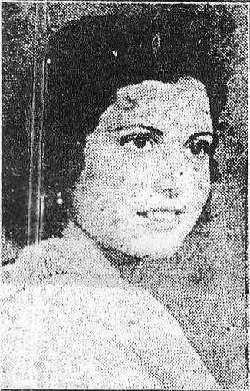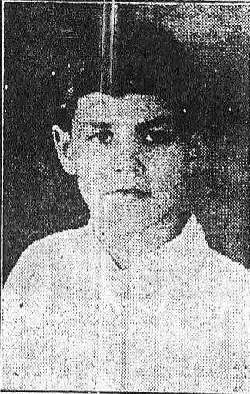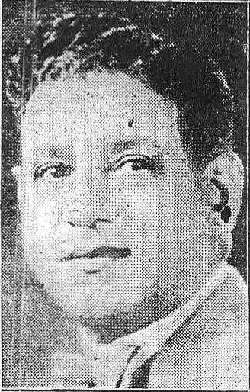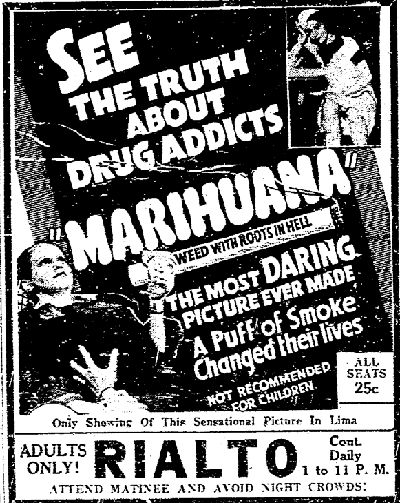
|
A RUSH TO JUDGEMENT: Chapter 4 |

|
|---|
The Licata Case Breaks Wide Open
 Providence Licata |
 Joseph Licata |
 Michael Licata |
4.1 – JOHN KAPLAND’S INVESTIGATION – The Licata Case Breaks Wide Open:
As previously mentioned, Harry Anslinger’s DEA (then known as the Bureau of Narcotics), did not actually conduct its own investigation into the Licata case. But instead relied on information provided to them by the local Tampa and Florida State police, as well as second hand accounts true detective magazines, newspaper articles, etc.)about the incident. Information that (as we shall see), in today’s language would be termed, “subject to suspicion.”
Thus, there is a one-in-a-million-chance that Anslinger really believed that Victor Licata, actually had committed the actually murdered his own family, AND that he had done so while under the influence of Medical Marihuana. But this is not to excuse Anslinger. Anyone who kept referencing such a case (over and over again) in both the creation and then the maintenance of the anti-medical marihuana laws, should have at least looked into the facts.
Here we simply bring out an historical fact, that it was not until being challenged by a journalist in the early part of 1936, and (to his obvious horror) discovering that at least one of his star Gore File Cases was a completely false fabrication.[4A] That he instigated a policy of actually investigating (at least to the point of obtaining newspaper clippings) all future Gore File cases. However, for whatever reason, he did not actively delve into his old ones.
Thus, it is a simple fact that (at the Federal level), there never was an actual investigation into the Licata incident. Which brings us to the first independent investigation ever actually conducted on the Licata case, the one done by John Kaplan, a law professor at Stanford University at the time. In his book, “Marijuana, The New Prohibition” John Kaplan writes as follows about Harry Anslinger’s Gore files in general:
“Lengthy lists of cases where marijuana use has supposedly produced violent criminal outbursts have probably provided the major support for the connection between marijuana and violent crime. Very little attention, however, has been given to tracking down, in any detail, the facts of any of the 'specific cases cited.”John Kaplan then goes on to mention that many of Anslinger’s Gore File cases were so cryptic that even locating the exact names of those involved was all but an impossible task. [4B] However the Victor Licata case did have a Who, What, Where and When associated with it and thus it was possible to look at it in greater detail. Kaplan (in the mid-1960’s), in-effect conducted the first INDEPENDENT investigation into the matter. And his findings were shocking.
The following is almost exclusively taken directly out of John Kaplan’s book, “Marijuana, The New Prohibition”, chapter 4 “Marijuana and Aggression.” [4C] Note that Kaplan primarily conducted his investigation by the simple act of corresponding (via letters) with local Tampa area newspapers and inquiring about their old articles dealing with the subject. From there he was able to obtain the names of persons and institutions to which he also sent letters of inquiry.
Marijuana, The New Prohibition by John Kaplan
Chapter 4 - Marijuana and Aggression
The Licata Case “. . . . [P]robably the most celebrated marijuana crime is the killing by one Victor Licata of his mother, father, two brothers, and a sister in Tampa, Florida, on October 17, 1933. The day after the killings, the Tampa Times carried the story beneath a page-one headline, "Crazed Youth Kills Five of Family with Axe in Tampa," and reported that the slayer "dazed and staring wild-eyed was arrested at the scene as officers broke into the home." [4D] According to the Times, "Licata was crouched in a chair in the bathroom and offered no resistance as officers searched him for weapons. He mumbled incoherently when asked about the crime." ----- “The marijuana connection was that W. D. Bush, city detective chief, said he had made an investigation prior to the crime and learned the slayer had been addicted to smoking marijuana cigarettes for more than six months. This he said had unbalanced his mind at least temporarily. A similar statement was made by Frank S. Caston, state drug and narcotic inspector, who said he had aided Bush in the investigation and was prepared to make charges against the youth when he heard of the ax slaying. He had also heard of several places where Licata bought the doped cigarettes.
The same day's paper announced that the police chief was "To war on marijuana traffic here": [4D]“Police Chief Logan said yesterday after he had been informed that the weed used as a cigarette had been indirectly to blame for the wholesale murder of the Michael Licata family . . . "Maybe the weed only had a small indirect part in the alleged insanity of the youth, but I am declaring now for all time that the increasing use of this narcotic must stop and will be stopped."The same attitude was expressed two days later in the Times' lead editorial, which also first admitted uncertainty as to the causal connection between the marijuana and the killing, but then went on to assume that the causality was established. Under the healing, "Stop This Murderous Smoke," the editorial stated that:“. . . it may or may not be wholly true that the pernicious marijuana cigarette is responsible for the murderous mania of a Tampa young man in exterminating all the members of his family within his reach—but whether or not the poisonous mind-wrecking weed is mainly accountable for the tragedy its sale should not be and should never have been permitted here or elsewhere. . . It required murders to impress the Tampa public and Tampa officials with the serious effects of the habit.” [4D]The next mention of the Licata case in the Tampa news-papers occurred some eleven days later when the Times reported that a psychiatric examination of Victor Licata had revealed that he was criminally insane. The psychiatric report described Licata's condition as "acute and chronic," and asserted that he was "subject to hallucinations accompanied by homicidal impulses and occasional periods of excitement." According to the examining psychiatrist, Dr. H. Mason Smith, Licata's insanity was very probably inherited. Licata's parents were first cousins, his paternal granduncle and two paternal cousins had been committed to insane asylums, and his younger brother Phillip, one of his victims, had been diagnosed a year earlier as suffering from dementia praecox. Moreover, it turned out that the police, the year before, had filed a lunacy petition seeking to have Licata himself committed but withdrew it when the youth's parents maintained that they could take better care of him at home. As a result of this information, Licata was adjudged insane and committed to the state mental hospital.
Nor does Licata's story end there: his subsequent history provides a strong indication that his crime resulted from a long-lasting psychosis rather than from any drug effect. Licata was diagnosed twice at the Florida State Mental Hospital, first as suffering from "Dementia Precox," and then, upon recapture after an escape, as suffering from "Dementia Precox with homicidal tendencies." In addition, from his arrival at the hospital until Dec. 4, 1950, when he hanged himself, Licata's behavior was "overtly psychotic." Over all this time, however, the mental-hospital records did not blame either Licata's 'crime or his mental illness on marijuana; in fact, they did not even mention his use of the drug." [4E]
It is obviously difficult—indeed impossible—to show whether Licata was under the influence of marijuana at the time of the killings or, even more significant, if he was, whether it was the drug, rather than any underlying schizophrenia, that could be said to have caused the killings. Despite these problems, however, the Licata case has played a significant part in the history of marijuana prohibition in the United States. Thus, Harry J. Anslinger, Commissioner of Narcotics and the principal witness before the Congress that passed the Marijuana Tax Act of 1937, told the legislators of only three specific cases illustrating the connection between marijuana and violence. The details given as to two of these are today insufficient for them to be identified and examined; the third, however, is a case where:“In Florida a 21-year-old boy, under the influence of this drug killed his parents and his brothers and sister. The evidence showed that he had smoked marijuana." [4F] “Nor has the Licata case faded from view since 1937. Thus Anslinger, over twenty years after his Congressional testimony, wrote:“Much of the most irrational juvenile violence and killing that has written a new chapter of shame and tragedy is traceable directly to this hemp intoxication. . . . A sixteen-year-old [sic] kills his entire family of five in Florida. . . . Every one of these crimes had been preceded by the smoking of one or more marijuana "reefers." [4G]Moreover, Pablo Osvaldo Wolff of the Expert Committee on Habit Forming Drugs of the World Health Organization, in his often-cited Marijuana in Latin America (1949), refers to the case as follows:“The second case, of like importance, is that of a young man of nineteen [sic], of the State of Florida (U.S.A.), of good character, quiet and jovial, who, under the influence of marijuana, suddenly attacked his entire family with an axe. The parents and three brothers [sic] were killed. The assailant remembered absolutely nothing about the horrible crime.” [4J]Finally, the Licata case is listed in what is probably the most widely circulated compendium of cases purporting to support the criminogenic properties of marijuana, Dr. James Munch's "Marijuana and Crime." [4K] Printed originally in the United Nations Bulletin on Narcotics, the article cites a case from Tampa, Florida, in 1933 where the defendant "murdered his father, mother and sister and two brothers with an axe while under the influence of marijuana. Didn't know of all this until the next morning."
Despite the fact that lists of marijuana crimes, no matter how dramatically described, are no substitute for checking into the actual relation of marijuana to violence, the published lists of marijuana crimes are still with us today. The sheriff of Los Angeles County [4N]put out a list of thirty-eight such crimes only two years ago and supplemented it with some thirty more the next year, while the Federal Bureau of Narcotics was at least as late as 1968 still making available such "Examples of Crime and Violence Associated with the Use of Marijuana." The problem, however, in all these cases is one of selectivity: In its field manual the Federal Bureau of Narcotics required that district supervisors obtain from local police officials "reports in all cases . . . wherein crimes were committed under the influence of marijuana." This type of investigation is parodied by sociologist Erich Goode, who states:“. . . imagine the impressive dossier which might result from a request that reports be conveyed on anyone wearing a hat while committing a crime; a case could thus be made on the criminogenic effects of hat wearing.” [4L]
4.2 - SUMMARIZING JOHN KAPLAND’S FINDINGS:
Although John Kapland’s investigation consisted entirely of sending letters of inquiry to various local newspapers and Florida State institutions, he was able to obtain the following facts:
- That, unlike some of Harry Anslinger’s Gore File Cases (which later on turned out to be totally fictious), there really was a Victor Licata; ---- that he really had existed.
- That instead of a “normally sane and quiet young man” as depicted in the DEA reports, that Victor had been mentally ill for some time.
- That the examining Psychiatrist, Dr. H. Mason Smith, had stated that Licata's insanity was very probably inherited. That his paternal grand Uncle and two paternal cousins had been committed to insane asylums. That his younger brother Phillip, one of his victims, had also been diagnosed as suffering from mental illness. [4M]
- That a year before, the police had filed a lunacy petition seeking to have Victor committed but withdrew it when Victor’s parents claimed that they could take better care of him at home.
- That Victor was diagnosed, not just once but several times as suffering from "Dementia Precox with homicidal tendencies". This was the original diagnoses as well as subsequent diagnoses at the State Hospital.
- That yes there seems to have been a Marihuana connection – as stated by:
- W.D. Bush (Chief City detective)
- Frank S. Caston (state drug and narcotic inspector)
- Police Chief Logan.
But no actual proof was offered that the Marihuana was the cause of Victor’s violent act.
- That Victor had tried to obtain a gun a short period of time before the murders.
===========
FOOTNOTES:
[4A]- The fake Gore File case talked about is the Eureka Axe Murder, which turned out to have been totally fabricated. A good write-up on it can be located at:
http://antiquecannabisbook.com/chap03/CensorMainPage.htm
[4B]– Note this museum has also had the same problem, but due to the volume of material available to us today, we have been able to crack open many of them. The reader is invited to ask for our free pamphlet on Anslinger’s Gore File – it can be emailed out for free.
[4C]- The book is still available for sale and a copy of the chapter can be read in whole at:
http://www.drugtext.org/Marijuana-The-New-Prohibition/iv-marijuana-and-aggression.html
[4D]- Referenced newspaper articles shown on Chapter 5.
[4E]- Letter from Dr. C. A. Rich, Florida State Hospital, Dec. 30,1968.
[4F]- Anslinger, H. J., Hearings Before the Committee on Ways & Means, House of Representatives, 75th Congress, 1st Session on H.R. 6385 (1937), p. p.
[4G] - Anslinger, H. J., The Murderers (1960), p. 38.
[4J]- Wolff, Pablo Osvaldo, Marijuana in Latin America: The Threat It Constitutes (1949), pp. 35- 36.
[4K]- Munch, James C., "Marijuana and Crime," United Nations Bulletin on Narcotics, Vol. 18, No. 2, April-June, 1966, pp. 15-22.
[4L]- The Marijuana Smokers by Erich Goode Chapter 9 - Marijuana, Crime, and Violence p88
[4M]- Documents to this effect can be seen in the addendum’s.
[4N]- Document can be found at
http://reefermadnessmuseum.org/chap10/LAPD.htm

Newspaper Move Ad (Lima News July 26, 1938)
VICTOR LICATA - A RUSH TO JUDGEMENT
WANT TO KNOW MORE:
=====================
Due to space / download time considerations, only selected materials are displayed. If you would like to obtain more information, feel free to contact the museum. All our material is available (at cost) on CD-Rom format. Please contact: antique_andy@catholic.org
 Back to Chapter 3 |
 VICTOR LICATA MAIN INDEX |
 On to Chapter 5 |